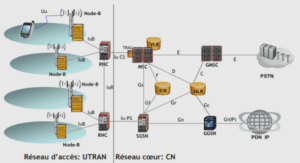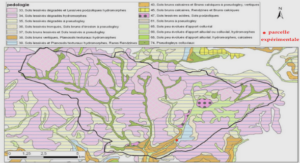Linguistic Forms per Type of Response
The second research objective consisted of describing the most recurring linguistic forms per types of responses by focusing on the most frequent two-word phrases and the variable slots that preceded and/or followed the phrases. Findings are presented per type of response.
Formulating the Gist of the Trouble
Formulating the gist of the trouble was the most frequently used type of response. Of the eight types of responses, it was used 32% of the time (104 occurrences). Formulating the gist of the trouble was a response that was used by all 15 nurses, and was defined as follows: listener states the root/essence of what is causing difficulties for the patient, underscoring the significance of the trouble. It is likely to encourage further discussion of this trouble as formulated (Pudlinski, 2005).
« It is » and Variable Slots
The most frequent two-word phrase used to formulate the gist of the trouble was the non-referential subject « it is » + S (with S referring to a variable slot). There were 37 occurrences in the formulating-the-gist type of response of the phrase « it is », of which all but one were in the contracted form of « it’s ». Moreover, in the NT, « it is » occurred 125 times, which means that « it is » was used 30% of the time to formulate the gist of the trouble. The variable slot following the « it is » phrase was most frequently filled by the following types of words:
• It is + ADV (54% – 20 occurrences by 7 nurses)
• It is + DET + [ADJ] + NOUN ( 16% – 6 occurrences by 2 nurses)
• It is + ADJ (14% – 5 occurrences by 5 nurses)
« You are » and Variable Slots
The second most frequent two-word phrase used to formulate the gist of the trouble was « you are » (21 occurrences); however, when compared to the rest of the NT, « you are » (always in the contracted form of « you’re ») was only used 17% of the time to formulate the gist of the trouble. It was followed by « going to » in 8 occurrences (by 5 nurses), which represented 38% of the cases. The 38% can be broken down further whereby 24% (5 occurrences by 3 nurses) consisted of the sequences « you are » + negative + « going to » and the remaining 14% (3 occurrences by 3 nurses) were simply « you are » + « going to ». Two different negations were used with the form « going to », which were « not » and « never ». All other sequences that followed « you are » varied and only occurred once, except for when the present continuous verb tense was used, but it occurred only 3 times.
« Going to » and Variable Slots
The third most frequent two-word phrase when formulating the gist of the trouble was « going to » with variable slots preceding and following the phrase. There were 18 occurrences to « going to » that were used formulate the gist of the trouble, of which 10 (56%) were in the form « gonna ». In the NT, there were 67 occurrences of « going to » (« gonna » and « going to » combined), which means that « going to » was used 27% of the time to formulate the gist of the trouble. The most frequent words7 that filled the variable slot preceding « going to » were:
• « You are » + [ADV] + « going to » (44% – 8 occurrences by 5 nurses)
• « It is » + [ADV] + « going to » (27% – 5 occurrences by 4 nurses)
• « That is » + [ADV] + « going to » (17% – 3 occurrences by 3 nurses)
Validating
Validating was the second most frequently used type of response with a rate of occurrence of 29% (92 occurrences), and it was used by all 15 nurses. Validating was defined as: to make valid (defensible) by normalising, agreeing, or giving importance (e.g., « I understand… »; « I know… »; « It is normal… »).
« I know » and Variable Slots
For the validating type of response, the most frequent two-word phrase was « I know », which was used by 11 of the 15 nurses. There were 38 occurrences of « I know » in the validating type of response and only 51 occurrences of « I know » in the NT; « I know » was therefore used 75% of the time to validate.
When used in a complex sentence, « I know » was directly followed by « it is » (« it’s ») in 8 of the 10 occurrences ; there was an ellipse of the conjunction « that » (e.g., « I know [that] it is… »). The sequences following « I know it is » were not recurring and varied; however, all following sequences had a negative connotation because either the subjectivity of a word was negative (e.g., « hard, » or « difficult, »), a negative sentence was used, or it was implied that the situation was not ideal (e.g., « a big change, » or « it’s early »). In addition, there was also an ellipse of the conjunction « that » in the phrase « I know you », which recurred 5 times and was done in such a way that the patient’s feelings were named. The feelings were named either directly using « you are, » or « you feel » (e.g., « I know you are depressed, » »I know you feel like…, ») or indirectly (e.g., « I know you are not hungry, » « I know you are not ready to hear this, » and « I know you do [want your legs back]. ») The subordinating conjunction « that » was only used twice by the same nurse (e.g., « I know that you feel… » and « I know that that’s not making you feel better… »).
Other Observations
There were two other words that frequently occurred in the validating response when compared to the rest of the NT that may be worth investigating in a larger corpus. They were « normal » (used 100% of the time to validate) and « important » (used 42% of the time to validate). The actual recurrence of the words « normal » and « important », however, were low in the validating type response: « normal » was used only 7 times by 4 nurses and « important » was used only 5 times by 2 nurses.
To summarise, the most frequent two-word phrases and variable slots of the validating type of response were « I know + [S] » and « I + [S] understand [5]. » For the preferred sequencing, « I know » was used most often in an independent clause with no complement, or it was used in a complex sentence. In contrast, variants of « I understand » were rarely used in complex sentences; they were mostly used in simple sentences. Moreover, « can » was used as emphatic markers with « I understand, » but that did not occur with « I know. » In addition, for « I understand, » the word « that » was used to refer to something that the patient had previously said; this did not occur with « I know. » Lastly, the words « normal » and « important » had a high frequency rate in the validating type of response when compared to the rest of the NT.
Naming Feelings
Naming feelings was the third most frequent type of response with a rate of occurrence of 17% (55 occurrences), and it was used by 13 of the 15 nurses. Naming feelings was defined as: listener states how the other person feels about the ‘bad’ news (e.g., « Clobbered ») (Pudlinski, 2005).
Two-Word Phrases and Variable Slots
For the naming-feelings type of response, the most frequent two-word phrases were « you are » (« you’re ») (19 occurrences), « it is » (« it’s ») (11 occurrences) and « I know » (10 occurrences); however, when compared to the NT, the rate of occurrence of these three phrases in the naming-feelings type of response was low (15%; 9%; 20%). Other analyses were carried out in order to identify data that could be further investigated.
Other Observations
The use of « I know, » which, when compared to the NT, was used 75% of the time to validate and 20% of the time to name feelings, reveals that naming feelings may have been frequently done while validating at the same time. To further investigate the possibility of there being frequent simultaneous use of two types of responses, the number of times the naming-feelings response was used while validating was verified. Of the 55 occurrences of the naming-feelings type of response, 20 occurrences (36%) were done by validating at the same time by 9 different nurses .
|
Table des matières
1. Background and Statement of Problem
1.1. RESEARCH Focus AND OBJECTIVES
2. Literature Review
2.1. INTRODUCTION
2.2. CONCEPT OF EMPATHY
2.3. TYPES OF RESPONSES USED TO VERBALLY COMMUNICATE EMPATHY
2.4. MISSING ELEMENT: LINGUISTIC FORMS
3. Research Methods
3.1. INTRODUCTION
3.2. RESEARCH DESIGN
3.3. DATA COLLECTION
3.4. FRAMEWORK FOR DATA ANALYSIS
3.4.1. Explanation and Justification of Method of Analysis
3.4.2. Analysis of Findings
4. Findings
4.1. TYPE OF RESPONSES
4.2. LINGUISTIC FORMS PER TYPE OF RESPONSE
4.2.1. Formulating the Gist of the Trouble
4.2.1.1. « It is » and Variable Slots
4.2.1.2. « You are » and Variable Slots
4.2.1.3. « Going to » and Variable Slots
4.2.2. Validating
4.2.2.1. « I know » and Variable Slots
4.2.2.2. « I understand » and Variable Slots
4.2.2.3. Other Observations
4.2.3. Naming Feelings
4.2.3.1. Two-Word Phrases and Variable Slots
4.2.3.2. Other Observations
4.2.3.3. Preferred Sequences
4.2.4. Making Assessments
4.2.4.1. Two-Word Phrases
4.2.4.2. Variable Slots
4.2.5. Emotive Reactions
4.2.5.1. Recurring Utterances
4.2.6. Expressing One’s Own Feelings
4.2.6.1. Two-Word Phrases and Variable Slots
4.2.7. Reporting One’s Own Reactions
4.2.7.1. Two-Word Phrases and Variable Slots
4.2.8. Sharing a Similar Experience
4.2.8.1. Two-Word Phrases and Variable Slots
5. Discussion
![]() Télécharger le rapport complet
Télécharger le rapport complet





